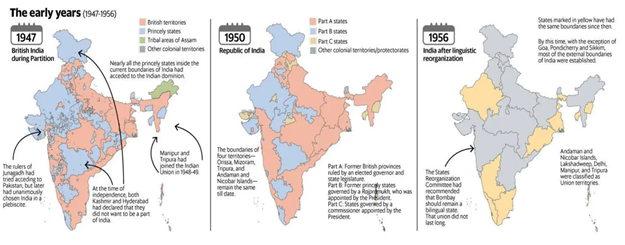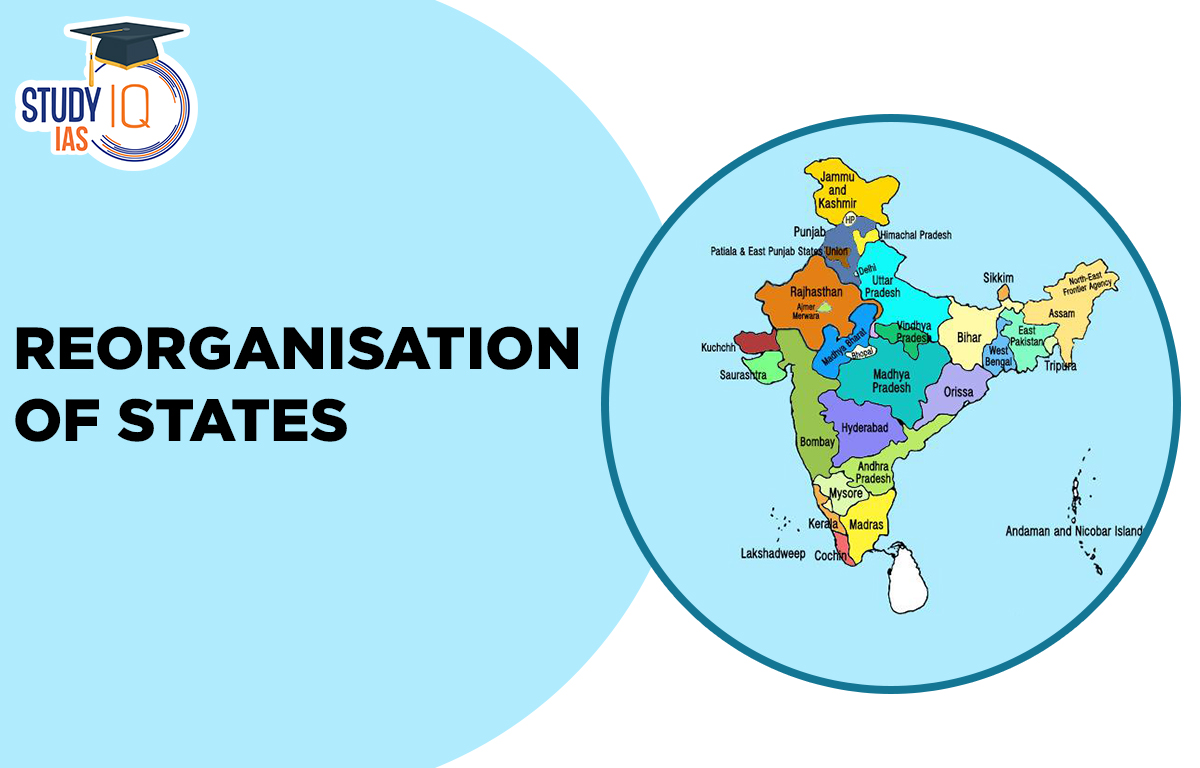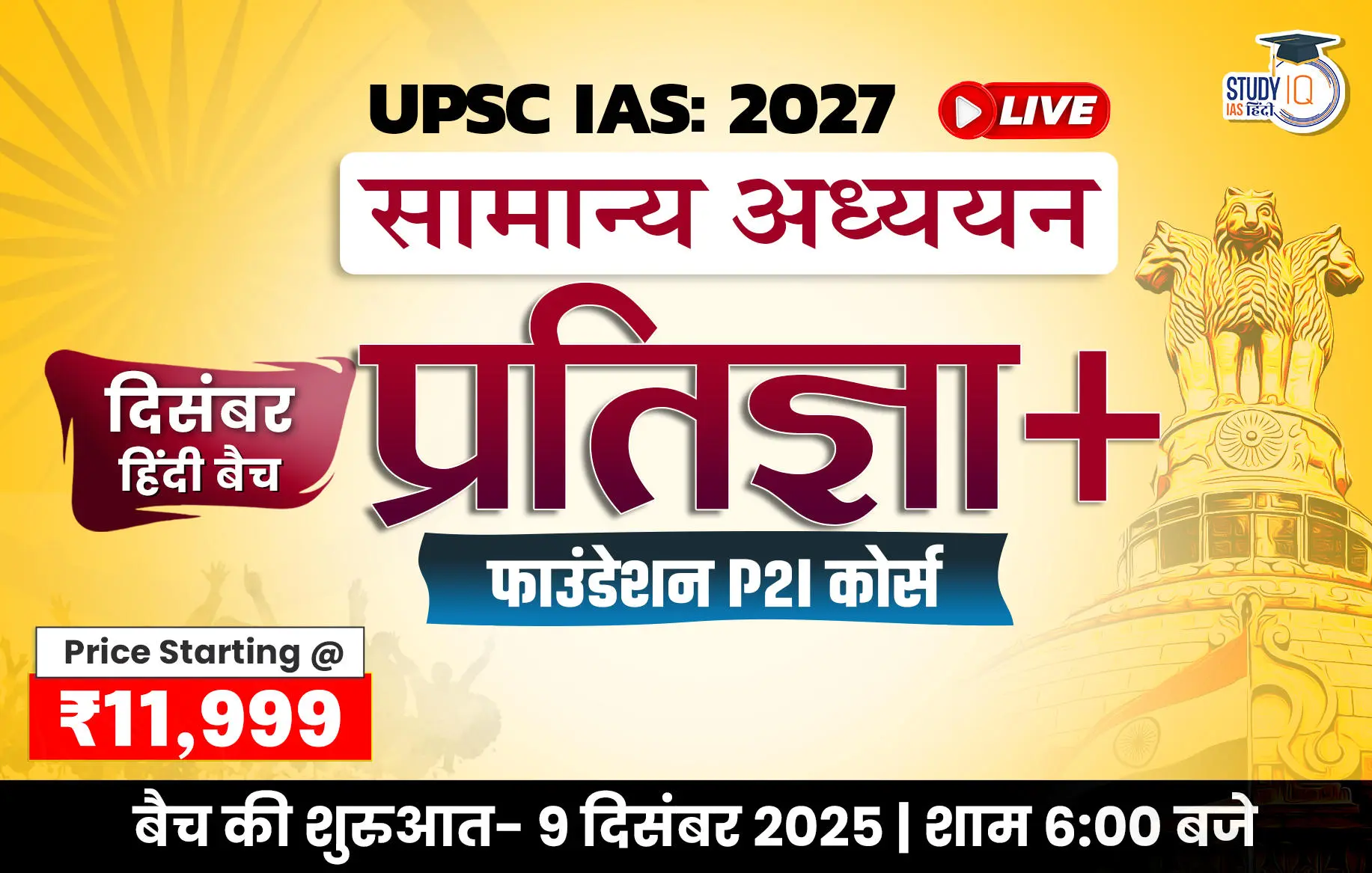Table of Contents
Context: Tamil Nadu Governor R N Ravi criticised the linguistic division of states, calling it a cause for creating “second-class citizens,” sparking controversy amid renewed debates on language politics in India.
Reorganisation of States
The Reorganisation of States in India was a key reform after independence, marked by the State Reorganisation Act of 1956. This act was influenced by public demands, especially in South India, and aimed to change state boundaries based on languages. It followed the Dhar Commission, which initially opposed this idea. The Act, passed on 31 August 1956, created new states like Andhra Pradesh and Kerala. While this was an important step, it didn’t end the reorganisation process. Over time, more states and Union Territories were created to better reflect regional identities and meet administrative needs.
Historical Background
- Post-independence India required an efficient administrative setup.
- The need arose to reorganise states for better governance, administrative convenience, and cultural representation.
State Reorganisation Act, 1956
- Came into force on 31 August 1956.
- Based on recommendations of the States Reorganisation Commission (SRC), 1953.
- Marked a shift from colonial administrative units to linguistically and culturally aligned states.
States Reorganisation Act 1956
The Parliament passed the State Reorganisation Act in November 1956 on the recommendation of the State Reorganisation Commission (Fazl Ali Commission). It provided for 14 states and 6 territories that were governed centrally. The 7th Constitutional 1956 Amendment Act was passed to replace the four types of states, known as Parts A, B, C, and D
State Reorganisation Act 1956 has added a new Article-350A, which carries out one of the key recommendations of the State Reorganisation Commission, addressing the safeguard for linguistic minorities.
The States Reorganisation Act of 1956 did not make a drastic reorganisation. To create the larger Andhra Pradesh State, the former Part B State of Hyderabad was merged with Andhra State. The former Part B State of Mysore became a more significant State of Karnataka with additional territories transferred from the States of Madras (Tamil Nadu) and Bombay. The State of Kerala was carved out of the former Part B State of Travancore-Cochin with new territories acquired from the State of Madras.
Pre-1956 Administrative Structure

Reorganisation of States Classification
| Category | Details |
| Part A | All British Provinces (Governor province of British India) – Assam, Bihar, Bombay, Madhya Pradesh, Punjab, The United Provinces, West Bengal. |
| Part B | Princely states with the legislature – Hyderabad, Jammu Kashmir, Madhya Bharat, Mysore, Patiala, Eastern Punjab. |
| Part C | Medium-sized princely states – States comprising Ajmer, Bhopal, Bilaspur, Cooch- Bihar, Coorg. |
| Part D | It Included Special status states – Territories comprising the Andaman and Nicobar Islands. |
The initial integration of princely states with the rest of India was purely an ad hoc arrangement. There were growing demands from different regions, particularly South India, for the reorganisation of states on a linguistic basis. Various commissions were established by the Government to look into the demands of the reorganisation of states.
State Reorganisation Commissions
There are some important commissions constituted for the Reorganisation of the State, such as the Dhar Commission, JVP Committee and Fazal Ali Commission.
Dhar Commission (1948)
| Dhar Commission |
|
JVP Committee (1948)
This committee was formed in December 1948 and submitted its report in April 1949, rejecting language as the basis for reorganising states. Potti Sreeramulu, a Telugu leader, demanded Andhra State from Madras and went on a hunger strike, but died on December 15, 1952. To address public outrage, the first linguistic reorganisation created Andhra State by separating Telugu-speaking areas from Madras.
| JVP Committee |
Main Recommendations:
|
Fazal Ali Commission (1953)
The Creation of Andhra Pradesh intensified the demand for the creation of states on a linguistic basis in other regions as well. The Government was forced to re-examine the whole question. Thus, a new commission, known as the State Reorganisation (Fazal Ali Commission), was set up.
| Fazal Ali Commission |
|
Outcomes of the State Reorganisation Commission
The Government accepted these recommendations with minor changes. The States Reorganisation Act 1956 and the 7th Amendment Act 1956 were passed. The distinction between Part-A and Part-B states was repealed, and Part-C states were abolished.
Some of the states were merged with adjacent states, while others were designated as union territories (The term ‘Union territories’ was not there in the original constitution; it was introduced by the 7th constitutional amendment). In November 1956, India was composed of 14 States and 6 Union Territories:
| Formation of States | Important Facts |
| Andhra Pradesh | 1953 – The state of Andhra Pradesh Act of 1953 created the state, taking some area from the State of Madras. |
| Gujarat and Maharashtra | 1960 – Bombay was divided into two States, i.e., Maharashtra and Gujarat, by the Bombay (Reorganisation) Act of 1960, and Gujarat became the 15th state. |
| Kerala | Created by the State Reorganisation Act of 1956. It comprised the Travancore and Cochin areas. |
| Karnataka | Mysore State (Alteration of Name) Act, 1973 changed the name of the state of Mysore to that of the State of Karnataka. |
| Dadra and Nagar Haveli | This territory was ruled by the Portuguese until it was liberated in 1954. Till 1961, the administration of the Dadar & Nagar Haveli was carried out by the administrator, and the 10th Constitutional Amendment Act of 1961 made it a union territory. |
| Puducherry | Puducherry’s territory includes the former French settlements in India known as Puducherry, Karaikal, Mahe, and Yanam 1954, the French handed over this territory to India. Till 1962, Puducherry was administered as an “acquired territory” with the 14th Constitutional Amendment Act making it a union territory. |
| Nagaland | State of Nagaland Act, 1962, created the new State of Nagaland (the 16th state) by taking out the Naga Hills area from Assam, especially. |
| Haryana | 1966 – The State of Punjab was bifurcated to create Haryana, the 17th state of the Indian Union and the union territory of Chandigarh. |
| Himachal Pradesh | 1970 – Himachal Pradesh were elevated to the status of a State by the State of Himachal Pradesh State Act, of 1970. |
| Manipur, Tripura and Meghalaya | With the enactment of the North-Eastern Areas (Reorganisation) Act of 1971. Manipur, Tripura and Meghalaya got the status of 19th, 20th and 21st states, at the same time, two new union territories, Mizoram and Arunachal Pradesh carved out of the territories of Assam. |
| Sikkim | 35th Constitutional Amendment Act (1974) – Sikkim was first given the status of ‘Associate State’. Parliament enacted the 36th Amendment Act of 1975, giving it the status of a full State. |
| Mizoram | State of Mizoram Act, 1986, gave Mizoram the status of a state |
| Arunachal Pradesh | State of Arunachal Pradesh Act, 1986 gave it the status of a state. Since 1972, Arunachal Pradesh has been a union territory. |
Present Statehood Demands in News
Many regions are still asking for their states or reorganisations:
- Uttar Pradesh: Proposals to divide into Purvanchal, Bundelkhand, Awadh Pradesh, and Pashchim Pradesh.
- Vidarbha: The Nagpur and Amravati areas in eastern Maharashtra want to become a separate state.
- Other Demands:
- Places like Delhi, Gorkhaland, Kamtapur, North Bengal, Jungle Mahal, Bodoland, Barak Valley, Coorg, Baghelkhand, Rayalaseema, Saurashtra, Mithila, Panun Kashmir, Bru Land, and Chakma territory in Arunachal Pradesh are also expressing similar desires.
- Gorkhaland (North Bengal), Bodoland (Assam), Maru Pradesh (Rajasthan)
- Kamtapur, Coorg, Rayalaseema, Saurashtra, Mithila, Panun Kashmir, Bru Land, Chakma territory, and more.
Major Factors Behind State Reorganisation
- Linguistic & Cultural Identity: Andhra Pradesh was the first linguistic state (1953), created after the death of Potti Sriramulu.
- Language often coincided with cultural unity and made governance easier.
- Tribal & Ethnic Considerations: States like Nagaland were formed to accommodate tribal uniqueness.
- Economic Aspirations: Regions like Chhattisgarh, Jharkhand, and Telangana demanded statehood to ensure focused economic development.
- Administrative Viability: States like Uttarakhand were carved from larger units for efficient administration.
- Security Concerns: Jammu & Kashmir was reorganised in 2019 due to national security and administrative issues.


 SLAPP Suits: Meaning, Examples, Impact o...
SLAPP Suits: Meaning, Examples, Impact o...
 Finance Commission of India, Articles an...
Finance Commission of India, Articles an...
 High Number of Pending Cases in Supreme ...
High Number of Pending Cases in Supreme ...

























